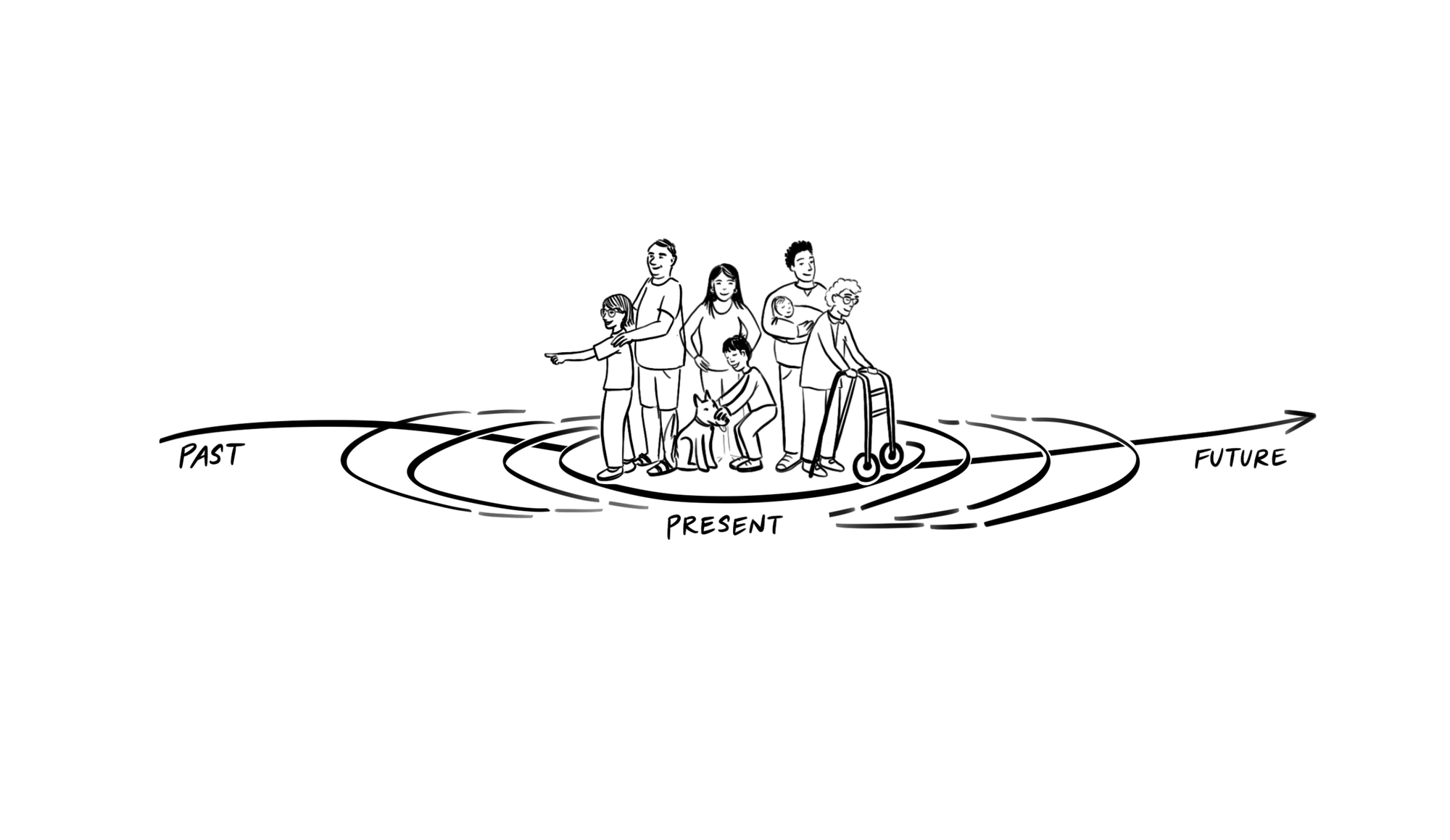
What is a living heritage approach? And, how does a development project adopt a living heritage approach?
Our living heritage approach honours the ever-evolving nature of a place and its people by allowing past uses to inform future design.
What is a living heritage approach?
Living heritage, or the living dimension of heritage, refers to the values, everyday practices, skills, and ways of knowing that we have inherited from past generations, which continue to shape our communities today and inform our decisions for the future.
Following this understanding, our living heritage approach honours the ever-evolving nature of a place and its people by allowing past uses to inform future design. Our goal in implementing this approach is to design a building that serves and strengthens the continuity of community connections to the place where it is rooted.
"This values-based approach describes the emerging practice of conserving a historic place based on the associated values of the community. Evolving from a material-based approach, the emphasis is placed less on a particular building’s age, and more on how the community values it."
(UNESCO, Recommendation on the Historic Urban Landscape, 2011)
How does a development project adopt a living heritage approach?
Creating a living heritage approach
In developing the living heritage approach for 305 Main Street, we drew from the field of heritage planning, including the frameworks of historic urban landscape and intangible cultural heritage. While these frameworks have been applied mainly to urban districts and historic cities (rather than to a site that is half a city block), the importance of this paradigm shift, regardless of scale, lies in the emphasis on and inclusion of a community’s intangible values.
Our process is further informed by the field of regenerative development with its emphasis on living systems thinking, where place and people are inseparable. Regenerative development methodology is grounded in an understanding that tangible solutions arise from addressing the intangibles, such as the uniqueness, the vitality, and the potentials of a place.
We also sought guidance from the City of Vancouver’s Chinatown Transformation Team, which has done much work on identifying intangible cultural values for the neighbourhood’s cultural heritage asset mapping and management plan.
Lastly, our living heritage process for 305 Main Street is shaped by our multidisciplinary team and its people-centred approach to historical research, community engagement, and design. We engaged John Atkin, civic historian, and engagement facilitators Chris Corrigan and Caroline Camman in research and community dialogue, respectively. By linking research to dialogue, and dialogue to design, we worked in an iterative, non-linear manner, allowing our learnings to continually guide our living heritage approach.
MAC's living heritage approach
Our living heritage approach has three related components.
Part A: Heritage Value Statement
Part A is a look back at the social history of the site and neighbourhood through a Heritage Value Statement. Its focus is on the values associated with this site, as seen through its past. This section is produced by John Atkin History + Research.
Part B: Community Engagement
Part B is the community engagement summary, produced by Chris Corrigan and Carolyn Camman, engagement facilitators. It is a look from the present to the future through an ongoing engagement with the community on the project's programming and design. Community engagement will be ongoing and continue beyond the writing of this report.
Part C: Principles for Design
Part C translates the values and emerging themes from the Heritage Value Statement and the ongoing community engagement into tangible design. Incorporating community-based learnings into design is about designing for specific functions as well as creating the conditions for the building to have a generative role in the neighbourhood. Learnings from history and community engagement are distilled into six principles and possible design responses. This section is produced by the design and development team members MA+HG Architects, EskewDumezRipple, Tomo Spaces, and Golden Properties.
